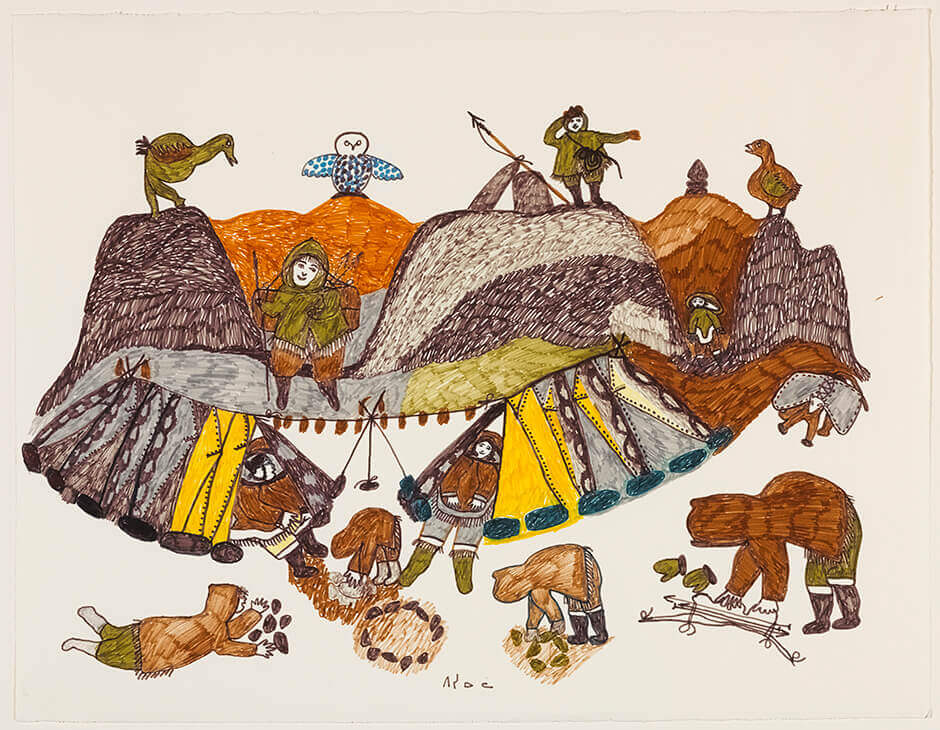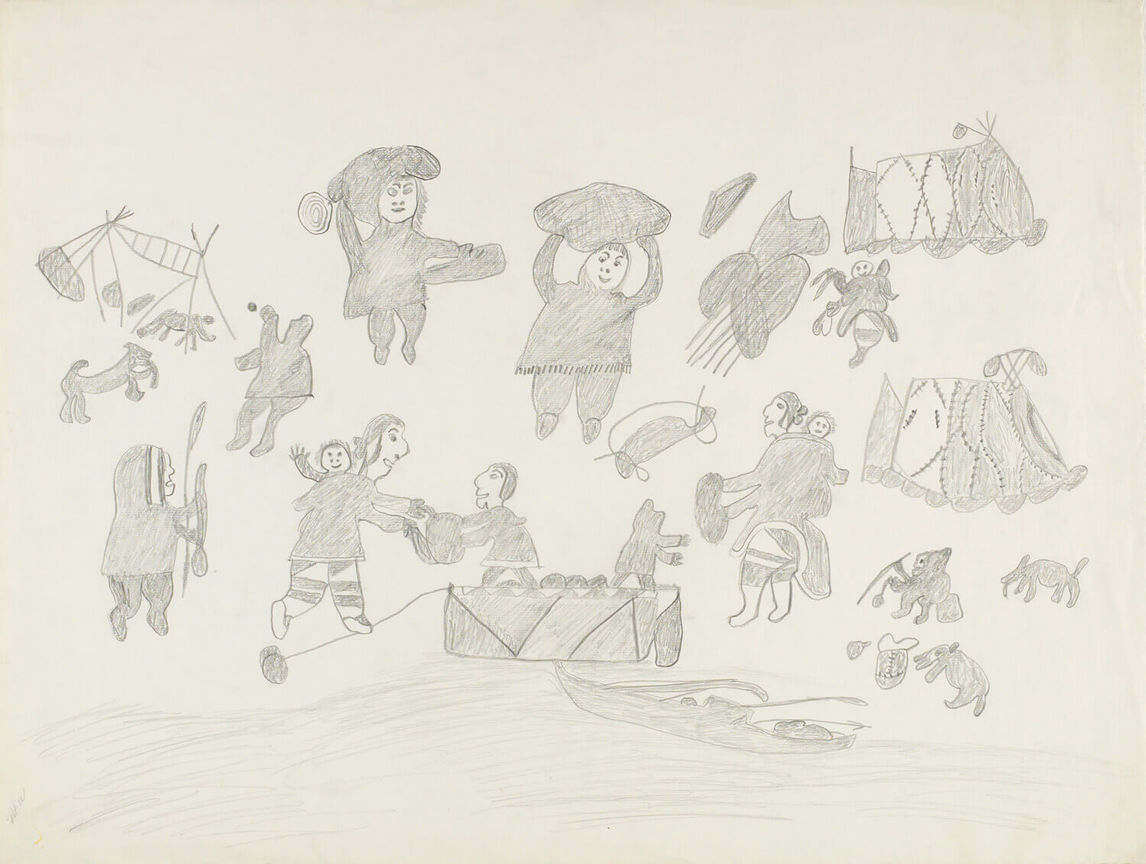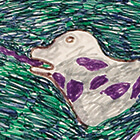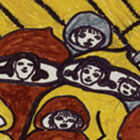Summer Camp Scene c. 1974

Pitseolak Ashoona, Summer Camp Scene, c. 1974
Coloured felt-tip pen on paper
50.6 x 65.4 cm
National Gallery of Canada, Ottawa
This exceptional drawing exhibits the naturalistic detail and joyful expression for which Pitseolak became celebrated. It reflects her at the fullness of her artistic achievements.

After years of practice, Pitseolak developed the ability to place her figures in the landscape. In Summer Camp Scene, a family at their camp and approaching travellers are settled between two hills; the figures are shown as both inhabiting the landscape and integrated into it. Through her observation and gradual experimentation, Pitseolak successfully communicates the layered and hilly terrain around Cape Dorset—Kinngait, the Inuktitut name for Cape Dorset, means “big hills.” Another Inuk stands on the lookout for sea animals, his harpoon ready, and is accompanied by some of the birds that migrate in the thousands to Qikiqtaaluk (Baffin Island) in the warmer seasons. With her attention to detail, Pitseolak carefully records the tent made from skins of square flipper seals, the pack that the dog carries, and the man’s hunting implements. Pitsik (dried fish) hangs between the two tents where women enjoy an idle moment in conversation.
Many of Pitseolak’s drawings, including Summer Camping, c. 1960–65, communicate the essence of camp life, embodying the Inuit sensibility of community and cooperation. Pitseolak was concerned not only with depicting the practical knowledge of the “old ways” but also with recording the less physically tangible values that accompanied traditional life, such as the importance of sharing everything from work tasks to food and shelter.
Remarkably, in Summer Camp Scene Pitseolak creates this dense scene with a limited range of colours—browns, grey, and olive green, enlivened by touches of yellow and turquoise-blue. As with many works created with felt-tip marker, the colours have faded somewhat, such as the olive green of the tundra, yet they still convey the artist’s love of colour and reflect her memories of summer on the land.

 About the Author
About the Author
 More Online Art Books
More Online Art Books
 Acknowledgements
Acknowledgements